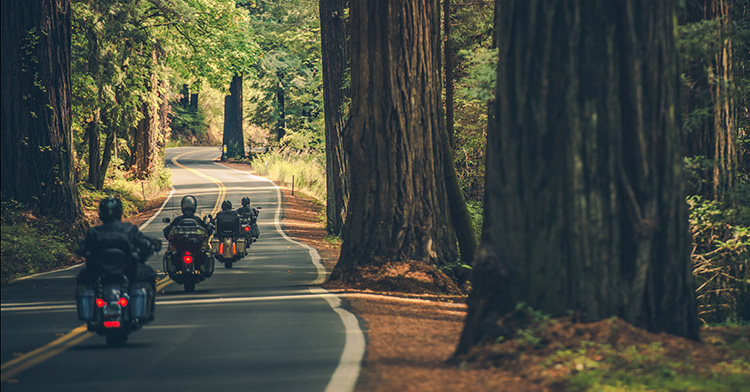Shortly after graduating from seminary, Andrew Forrest received an invitation to replant a struggling church in East Dallas.
Munger Place Methodist Church, founded in 1913, had for many years played an influential role in the city, maintaining a membership of more than 2,000 from the 1930s through the 1960s. But in the early ’70s, with the court-ordered desegregation of the Dallas Independent School District, its families began to leave the East Dallas area. The congregation and nearby community suffered as more and more people moved away.
When the congregation’s financial plight worsened after the 2008 recession, the church could not afford to maintain its once-ornate facilities. In 2009, Munger Place prepared to close its doors.
Meanwhile, a nearby thriving congregation, Highland Park United Methodist, had plans to plant a second campus in East Dallas. When Highland Park heard about Munger’s distress, leaders began conversations about assuming responsibility for the congregation on the brink of closure. Rather than starting a new church, they began to consider whether they should replant an existing one.
Highland Park committed to raise the money to renovate Munger Place, and the North Texas Annual Conference agreed to allow Munger to become a campus of Highland Park.

Then they called Forrest.
Aware that the church’s context included a complex configuration of histories, missions and constituencies -- for not one but two communities -- Forrest understood that Munger presented a challenge with few models.
Yet he accepted the invitation and narrated a vision to breathe new life into the dead and dying.
“Folks in our neighborhood have a strong preservationist tendency,” Forrest said. “We kept the best parts of the old when we renovated Munger, but updated it. In some ways, our worship style matches our building, drawing on the resources of the tradition, but making ancient Christian practices accessible to 21st-century Americans.”
Now, six years later, new life seems to be springing up all around Munger and East Dallas.
Forrest was recently interviewed by Dustin Benac, a Th.D. student at Duke Divinity School. The following is an edited transcript.
Q: How did you end up at Munger?
I met Paul Rasmussen, who was at that time one of the ministers at Highland Park (he’s now the senior minister), at a luncheon. And Paul said, “Why don’t you come by my office and talk to me sometime?”
I did that a couple of times, and then he shared about the idea to replant Munger. At first, I wasn’t really interested, because I wasn’t sure if my wife and I were going to stay in Texas.
But then the more I thought about it, the more I thought, “That’s pretty cool.” I liked the idea of planting a new church in an urban area. Also, my wife and I were already living in East Dallas, right in the Munger neighborhood.
Ultimately, I threw my hat in the ring. I am so grateful that Paul reached out to me -- I can’t imagine where I would be apart from his gracious invitation.
Q: How did the vision to replant Munger acknowledge Munger’s particular history? How did you pursue this vision during the early days of your community?
We did not spend much time worrying about Munger’s specific history as a church; rather, we were much more concerned with the history and culture of our neighborhood. What helped is that I was already living in our neighborhood at the time, and had been for the previous three years.
We tried to avoid anything that would seem like the big-box retailer was coming in and taking over the beloved mom and pop establishment.
So we kept asking, “Will this work for East Dallas?” And I think that question helped us connect with our neighborhood. We also had a presence at as many neighborhood functions and festivals as possible, which also helped us get a feel for our neighborhood.
Q: I’ve heard you describe Munger’s vision as “combining the best of the old with the best of the new.” How has this vision been expressed in terms of the facility and the discipleship practices of your community?
For one thing, our building is an older building, at least old for Dallas, and the houses around here are old. But nobody wants to live in a 1915-era house without updating it. People buy houses and then like to update the bathroom fixtures and the kitchen and so on.
As for our physical space, we have video and high-tech equipment, but we also have pews and stained-glass windows. Munger looks like a church.
As far as discipleship practices, in a world in which there is almost no historical memory at all -- which is the modern American world -- when you begin to pull out resources from the tradition, they often strike people as surprising and new.
We’re not doing anything new, but we are trying to pull out the best of the old. And when I do so, I always try to explain it and make it accessible. A lot of times, a little simple word that explains why this practice is valuable or what the thinking is behind it is all that is required.
Ash Wednesday, which is a tradition with hundreds of years of history behind it, is an example of something old that we’ve reclaimed. Ash Wednesday is somber and bracing, but it is also a clear-eyed look at the truth about who we are as humans: “You’re a sinner, and you’re going to die.” This year, 667 people attended our Ash Wednesday services.
People who talk about the “nones” and the unchurched often tell church leaders like me that we need to make our message more palatable and avoid unpopular topics like sin and death. I think this is exactly the wrong advice.
Neither by background nor by training nor by inclination am I a fire-and-brimstone preacher. And yet the gospel itself makes no sense if it’s just vague feel-goodery. The gospel, as I understand it, is the good news regarding the life, death and resurrection of Jesus Christ.
Forty-five percent of the Munger members did not have a prior church affiliation, and almost 700 people attended Ash Wednesday services this year at Munger! What those statistics tell me is that the choice facing the church in an increasingly secular, Western, 21st-century context is either to move away from orthodoxy and therefore toward irrelevance and death or to deliberately move toward orthodoxy and therefore toward Spirit-given vibrancy.
Ours is a culture that has been deracinated -- uprooted -- and in which people are told that life is all about getting and spending. No wonder folks seem to be hungry for the deep roots of the gospel and the church.
We’re just trying to do things that Christians have been doing for 2,000 years and remind people that the church has been around for 2,000 years -- that it’s not an ahistorical faith.
Q: With Munger recently celebrating its sixth year, what does the congregation and the surrounding neighborhood look and feel like today?
Our average attendance in 2017 is just over 1,000. We have eight full-time staff members, but we also draw on the services of the staff of our parent church, Highland Park United Methodist Church.
Our style of worship would fall under the “contemporary” category, since we use rock-style worship and video and dress casually. Our building has a traditional feel, so our style will seem much more traditional than the typical megachurch in Dallas.
Our neighborhood is gentrifying, with extremely expensive home values, but there are still large pockets of poverty -- it’s a mix.
Q: How do you create the space where wealthy and poor congregants can worship together and share a common life?
It’s not easy, because we all seek affinity with other people who are like us. So you have to be intentional to reach out over those differences. But what I have found is that the most important thing for a church is to bring people into fellowship and then train them to live like Christ.
This is done in three ways: teaching people to read Scripture, teaching people to pray and connecting people together.
In 2017, we’re reading the Bible together as a congregation, using the One Year Bible. We handed out thousands of One Year Bibles on Christmas Eve. Everything we’re doing in 2017 is helping people read the Bible. I’m preaching through the Scriptures, and we have a daily blog and a weekly podcast.
With a diverse congregation, what doesn’t work, frankly, is when either the rich or the poor come and only consume. What changes people is when they come to feel like they actually play a role in the community. I’ve come to believe that our mission, for both the low-income and the wealthy people, is to bring them into community and make them feel like they belong.
When we actually become friends with each other, then it is often in the small, unplanned, organic ways that people can begin to meet one another’s needs.
For example, we have a guy who can’t read who sits in our coffee bar every Sunday and watches the sermon as it’s broadcast around our campus on the various closed-circuit TVs. As he’s there every Sunday, he is joined by a software salesman. They’ve become friends.
The guy who can’t read felt comfortable enough to start attending my Wednesday Bible study in the evenings, knowing that his friends were with him and could help him follow along. Then, before Christmas, this same guy volunteered to help with our annual Christmas store for low-income families. This was huge. Now he knows that he has something to contribute, though he might not have much money or education. He knows that Jesus can use him, that he has something to offer for the kingdom.
Q: How do you remember your collective story while remaining open to the Spirit’s movement in your midst?
That’s something I think about a lot. One thing you do is just tell the same story over and over.
So every year on our birthday, we talk about what we’re about as a congregation: we’re about trying to bless our neighborhood and pull people into fellowship with the Lord.
“We’re a church for our neighborhood” -- I say that all the time.
I always like to say you can’t be a great small restaurant in Dallas, or you can’t be a great unbusy restaurant in Dallas. If you’re great, people are going to want to come to your restaurant -- and if they aren’t coming, you’ll stop being busy.
So you might be able to be a great small church in a dying former mining town, perhaps, but it is impossible to be a great small church in a major metropolitan area. If the church is a place where people experience the power of God, they’re going to be voicing that to their friends.
We exist for the world, not for ourselves.
Q: With that vision in view, what is the animating story of your life together that you keep retelling?
I think the animating story is that the harvest is plentiful and the laborers are few.
Every dying church in America has a community garden. Every dying church in America has a co-working space. What do I mean by that? I have no problem with community gardens; a garden is a beautiful thing. And I don’t have any problem with co-working spaces. But Jesus didn’t tell us to start a community garden, and he didn’t tell us to start co-working spaces; he told us to make disciples. That’s literally the mission of the church.
The problem is not the gardens. I’m being provocative to make a point. The problem is that we often want to substitute secondary and tertiary concerns for the primary concern of discipleship.
We don’t actually disciple our people. We don’t teach them about the Bible; we don’t actually do the core practices of the faith. So there are dying Methodist churches in every ZIP code in America that have a few old people coming to them, and they say, “We need to reach out to young people, so let’s start a community garden.”
One of the ways I know God is at work at Munger is because 45 percent of our membership did not come from a previous church affiliation. But why is that? I think it’s because we’re just trying to do what the Lord told us to do, which is preach the gospel and try to make disciples in our own very halting way.
Our story is a story of actually believing that Jesus wants to draw people to himself and that the Holy Spirit is actually at work. The bitter irony of the dying mainline churches in America is that they are all moving away from orthodox Christianity. And the more they move away, the faster they die.
Q: What time horizons do you and your community’s leadership use to make decisions?
On the one hand, I’m super-motivated to think about building a church that’ll be here after I’m dead and my kids are dead. I think we need to have a very long view, a 100-year view.
Everything we have in life, without exception, has been given to us by the faithful stewardship of the people who have come before us or destroyed by the lack of stewardship of the people who have come before us. All of our art, all of our music, all of our universities, our hospitals, our knowledge.
Over my dead body are we not going to leave this place better than when we got it. Even institutionally, I want to leave buildings and the land as a gift so there’s a thriving church community here 100 years from now.
On the flip side, like anybody else, I don’t know how long I have as a pastor or before the Lord calls me home. And so I’m also just deciding that the most important thing for me to do is try to be a faithful pastor now and try to help disciple our people now. If that means God gives me two years, then we’ll try to see how much further we can be in two years than we are now.








